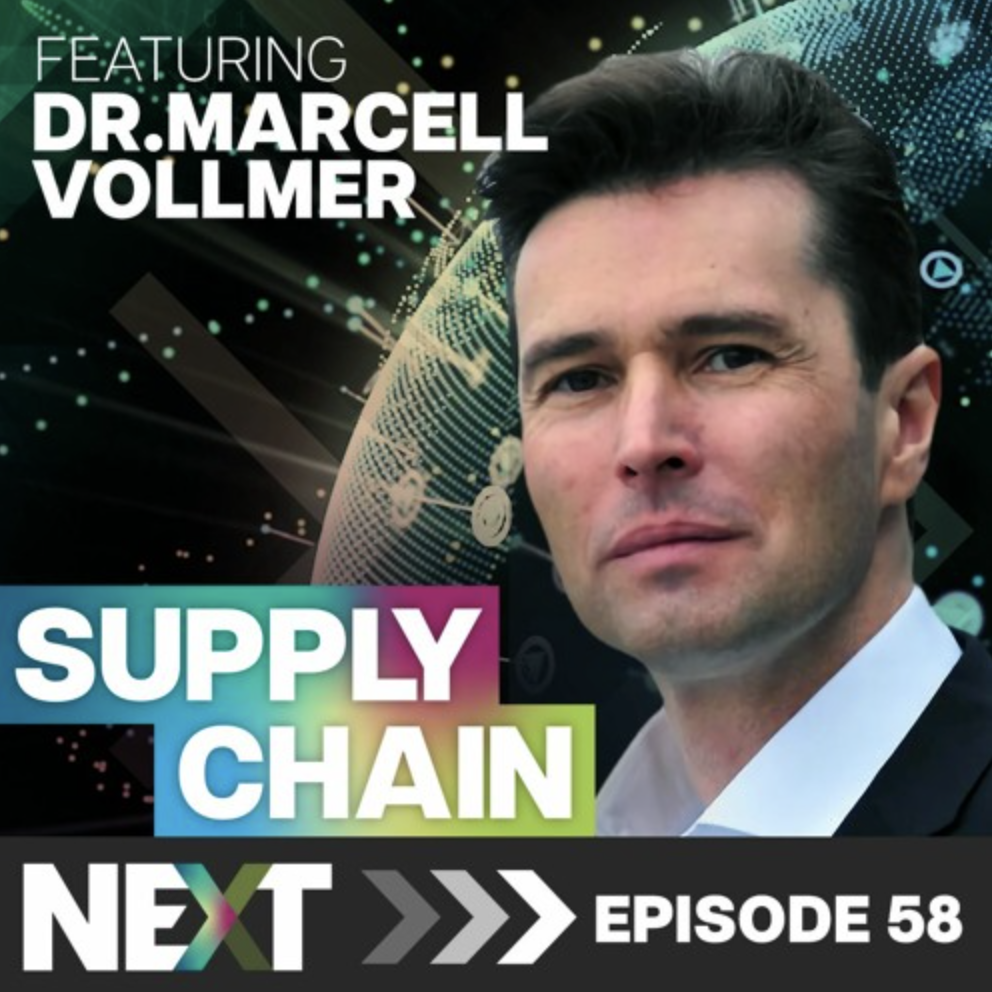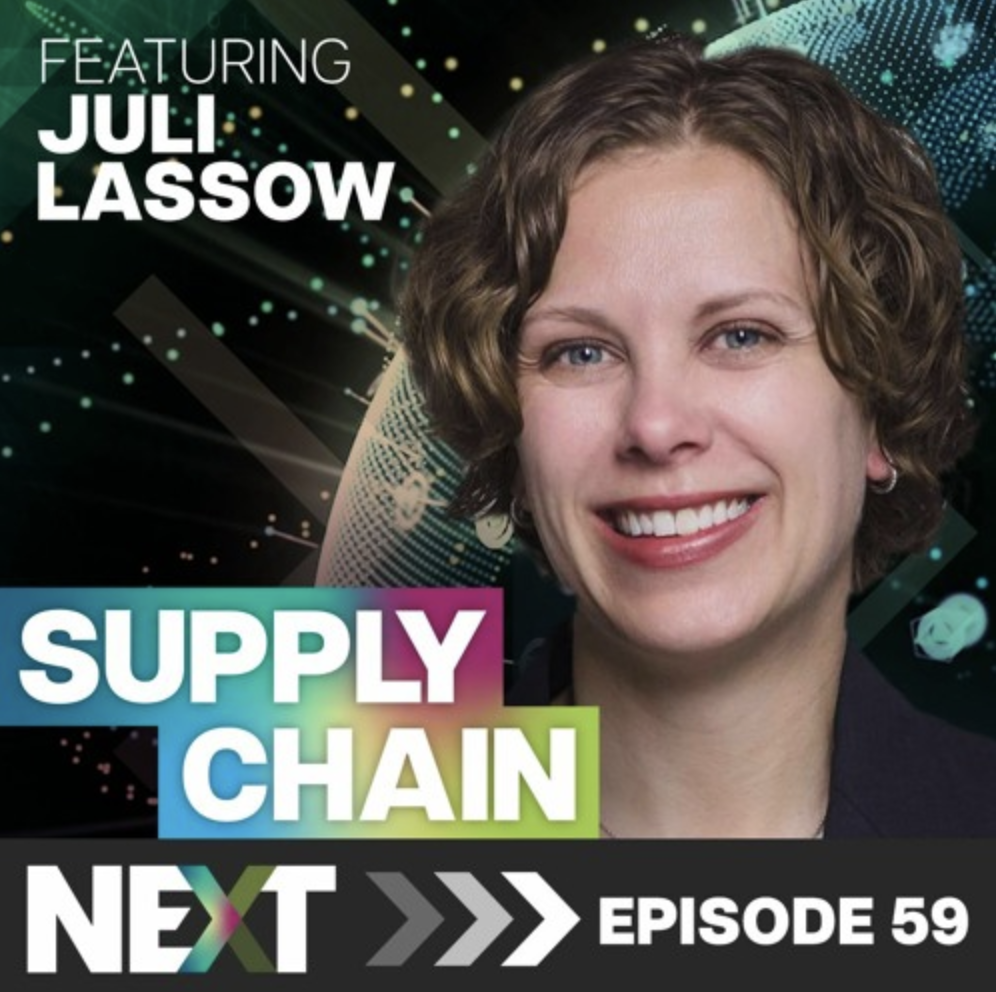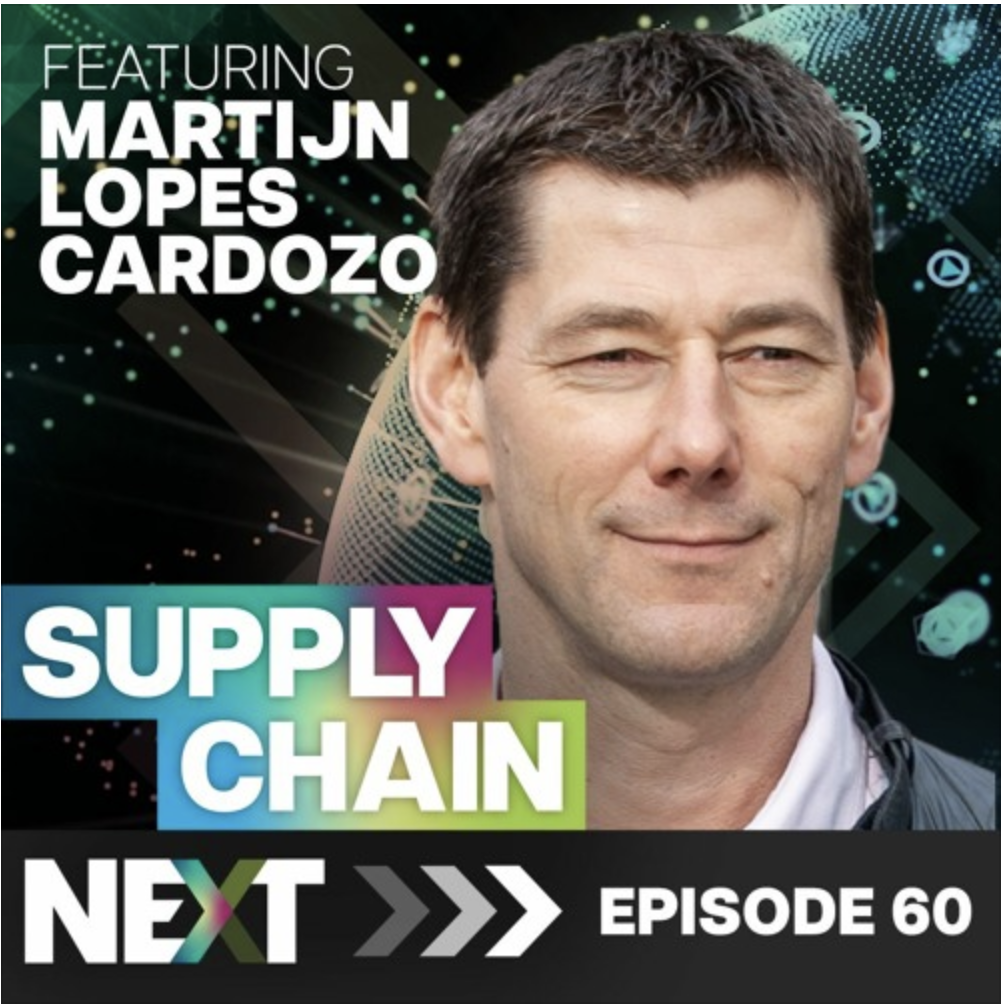Episode 4
Podcast: Geoffrey Parker on the Economics of Networked Markets
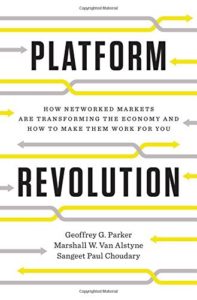 In 2016, Geoffrey Parker and co-authors Marshall Van Alstyne and Sangeet Paul Choudary published Platform Revolution: How Networked Markets are Transforming the Economy and How to Make them Work for You. An international bestseller, the book has gone on to become required reading in Silicon Valley and the business world at large.
In 2016, Geoffrey Parker and co-authors Marshall Van Alstyne and Sangeet Paul Choudary published Platform Revolution: How Networked Markets are Transforming the Economy and How to Make them Work for You. An international bestseller, the book has gone on to become required reading in Silicon Valley and the business world at large.
Parker has always been interested in the intersections of technology, business, society, and economics. In the late 1990s he became interested in emerging networked platforms like eBay and Amazon, and was writing papers on them (with colleagues Marshall Van Alstyne and Thomas Eisenmann) at least five to six years before the platform model really took off.
Currently a professor and director of the Master of Engineering Management program at Dartmouth College and a Research Fellow and Visiting Scholar at MIT, Parker is the fourth guest on the Supply Chain Next podcast.
In his conversation with host Richard Donaldson, he talks about the rise of networked markets and how they affect supply chain digitization.
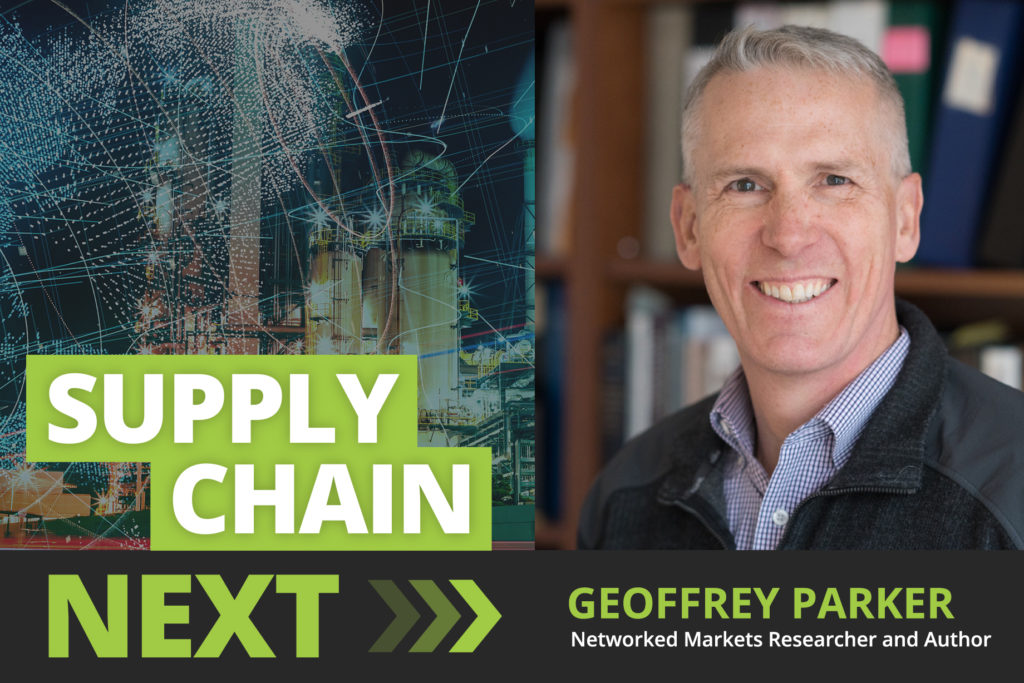
Highlights from the Conversation
In Platform Revolution, Parker and his co-authors describe different types of platforms and network effects. It’s helpful to recap a few basic concepts here.
Platforms are online communities that matches users who can then engage in some sort of transaction. It could be buying something, or it could be as simple as viewing the latest photo they’ve posted.
The network effect is the way that the value of a platform grows exponentially with the number of users. In other words, it’s the users on the platform that creates the value.
There are a few different types of network effects. On eBay, for example, the large number of buyers attracts more sellers, and the large number of sellers attracts more buyers. This is a two-sided network effect, and it’s the secret to the success of many platforms.
Network effects can have both positive and negative consequences. Some examples of potential negative effects might be too much choice for buyers, or too much competition for sellers. Platform teams need to be aware of these issues and find ways to help manage them. In the case of too much choice for buyers, one solution might be a search tool that helps narrow down the options.
You can read more about the different types of network effects in Platform Revolution.
Signs of Change
- Parker and Van Alstyne didn’t think of these networked markets as “platforms” when they were first starting to emerge in the late 1990s.
- One example was level editors in video games. These were user friendly tools that allowed players to add their own content, which enriched the game as a whole.
Authoring “Platform Revolution”
- Parker has started teaching a class on information strategy, including how to do pricing on two-way networks, especially when bundling. (Bundling and doing pricing right for the different user groups are one of the most important aspects in networked markets.) Van Alstyne was also teaching at the time, and they co-developed the content for their classes.
- Parker, Van Alstyne and Thomas Eisenmann released Strategies on Two-Sided Markets, which is still in the top 50 all time articles on Harvard Business Review. (They were also recognized for the idea on the 2019 Thinkers50 list.)
- A few years later, they connected with Chaudary, a consultant in Singapore, who had been writing on some similar topics. After speaking with him, they invited him to become part of the team for the book.
The Genesis of Platforms – and How They’re Changing in the Digital Age
- Platforms existed before the internet. They go back to antiquity – think of a village market, full of farmers and artisans who came together to interact with potential customers. Because of limitations like the cost of transportation and other transaction costs, these couldn’t scale in a meaningful way.
- More recently, utility companies acted like platforms. But there are massive barriers to entry with becoming an electrical or water utility, so they were very difficult to disrupt. The digital age has removed most of these barriers, and made it easier to scale. For example, electricity used to be fully vertically integrated—utilities did all of their own power generation, transmission and supply to end users—but now firms are open to outside suppliers getting access to their end users. Think of small solar installations feeding power back into the grid.
- Even though startup costs have fallen dramatically, some of the largest largest platforms still have the biggest network effects.
- A lot of new platforms provide for more development of new features by users, and architectures can be recombined in interesting new ways that no one would have thought of otherwise.
Why Consumer Markets Have Been Dominating Innovation
- In the book Platform Revolution, a lot of the examples were consumer-focused for a reason: consumer-facing platforms were (and still are) far less regulated.
- It is easier to innovate for the consumer market because the cost of experimentation is lower, and demand is much larger. Consumers represent huge markets.
- In industry, you have very organized, stable, and robust supply chains. If you’re a large entity, you tend to have your IT department come up with solutions for these business problems rather than looking outside.
Best Practices in Consumer Platforms and How They Translate to the Business World
- Consumer interfaces are much better, and are proving that it’s possible to organize supply chains with thousands of suppliers—think of Amazon.
- We’re going to see a lot of push to cut across vertical silos within organizations.
- Getting information out of platforms through APIs makes it possible to connect with outside entities.
- Most organizations have been very internally focused, and a lot of re-architecting has to happen before they can be outward facing to the external parts of their ecosystems (consumers and external suppliers).
- Enterprises are very security focused (and rightly so). But open collaboration is the new normal, so they need to find ways to be more flexible.
Should Your Enterprise Create Your Own Platform or Use an External One?
- If you create your own, peers may not want to stay in a walled garden. An internal platform may limit the size of your market.
- There are definite advantages to building your own, like being able to set rules of engagement, set pricing, and other controls. But risk-averse customers don’t want to get locked into that kind of system. You have to find the balance between control, user lock-in, and ultimate market size.
- If you think the platform is going to tip into wide use, if you can help it tip, and if you can control your interactions on the platform, then adopting may be the right choice.
Risk and Security
- Some industry supply chains are very risk averse for a reason. For example, in healthcare the consequences of error can be massive. Similarly for oil and gas, there may be environmental consequences to errors.
- With FinTech there is a different kind of risk. Platforms have to be sure that they’re handling the data in a responsible way, not commit fraud, and are able to handle scale up. This requires vetting, but users aren’t going to wait around forever for the process—the longer it takes the more likely they are to leave.
More Ways to Create Value Within a Platform
- Aggregated data also increases the value of a platform exponentially. It’s the third curve, and its value over time increases.
- External parties also add value exponentially. When you add products, services to a platform value scales in a linear way. When you open the platform up to external users, that’s when you get additional exponential increases.
- External users are able to detect bad behaviour and contribute to squashing it before it drives away other users. They can also identify trends, gaps, and failure points between what users think they get and what they actually get.
What’s Next
- In the near term, platforms will need help navigating the talent stack.
- In the longer term, it’s very likely more regulation will be coming. The earliest firms have done what they liked for a long time, but they’re coming under more scrutiny now.
- Breaking up the largest firms may not make sense, because it could kill value. But governments around the world are making assessments and lots of thinking needs to be done.
- Parker is working on a new book on data governance and regulation. It will be interesting to see if there’s a different approach that can be taken to regulation—a lot could be avoided through better self-governance that would make regulation less or not necessary. The days of the wild West are coming to an end.
Platform Adoption in the Business Community
- There is enormous opportunity for platforms to shape business in the decade to come.
- Where there can be a platform to reduce transaction costs, there will be.
- Existing enterprise resource planning (ERP) systems are not designed to integrate horizontally across businesses, but platforms do.
- An organization can be transformed from a traditional pipeline to a network through internal education initiatives, or if investors can help management see the opportunities. But changing the business model is much easier done from the outside—private equity plays a huge role in dealing with the inevitable channel conflict.
To get the full picture, you’ll want to make sure you’ve read Platform Revolution and listen to the full conversation on Soundcloud.
You can connect with Geoffrey Parker on LinkedIn.
More Episodes
You can listen to our audio tracks and read highlights for each episode below.
We’ve also started publishing video episodes on our YouTube channel.
058 – Dr Marcell Vollmer – Tech in Supply Chain, and the Sustainability Shift
Supply Chain Next · 058 – Dr Marcell Vollmer – Tech in Supply Chain, and the Sustainability Shift Meet Dr. Marcell Vollmer Dr. Marcell Vollmer, a renowned expert in the fields of digitalization, innovation, and sustainability. Marcell is a sought-after speaker and author that has dedicated his career to helping companies and individuals navigate the rapidly…
059 – Juli Lassow – Revolutionizing Retail, Sustainable Strategies, & the Future of Partnerships
Supply Chain Next · 059 – Juli Lassow – Revolutionizing Retail, Sustainable Strategies, & the Future of Partnerships Juli Lassow ,founder of JHL Solutions Meet Juli Lassow Juli Lassow, an accomplished retail professional, speaker, writer, and sustainability advocate, is the founder of JHL Solutions, a consultancy focused on creating outstanding private-label partnerships. With a deep…
060 – Martijn Lopes Cardozo – Circular Supply Chain
Supply Chain Next · 060 – Martijn Lopes Cardozo – Circular Supply Chain Martijn Lopes Cardozo, CEO at Circle Economy Meet Martijn Lopes Cardozo Martijn, a seasoned entrepreneur, has an impressive track record of establishing prosperous ventures within the realms of software, mobile, and digital media in California. Upon returning to the Netherlands, he…

